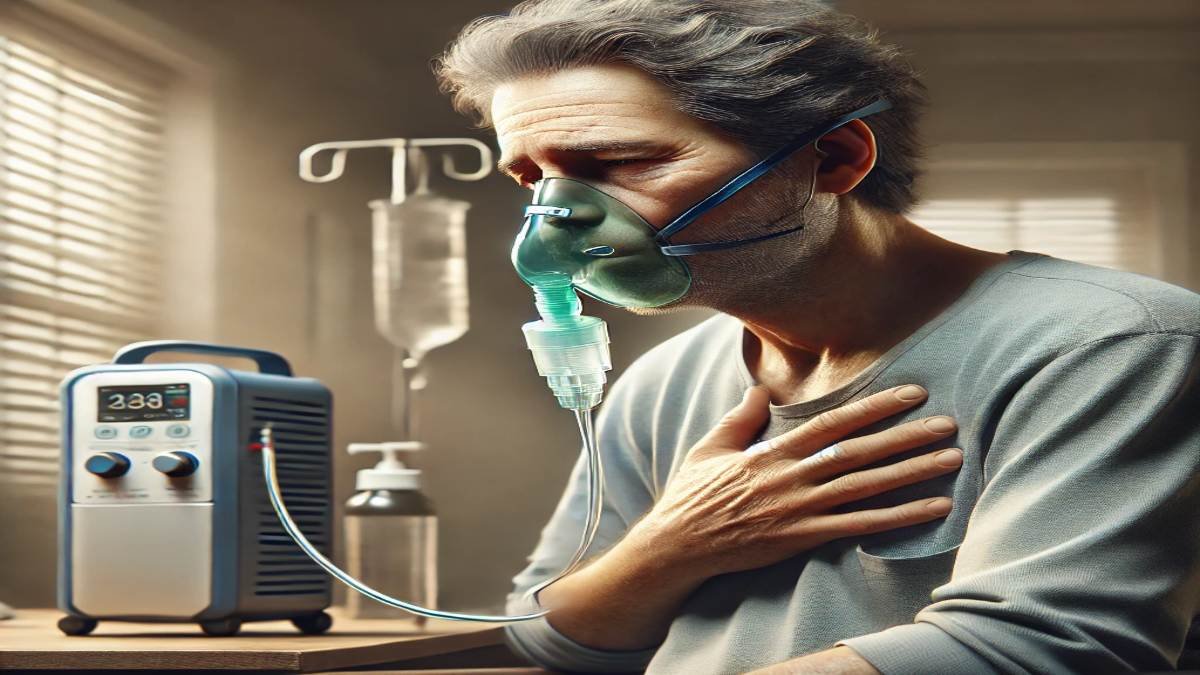Overview
Chronic Obstructive Pulmonary Disease (COPD) is a long-term lung condition that affects millions of people worldwide.
It’s characterized by persistent respiratory symptoms and airflow limitation, making breathing increasingly difficult. Breathing is an involuntary yet essential process that powers our bodies and sustains life.
For individuals with COPD, however, every breath can feel like a challenge.COPD is a progressive disease, meaning symptoms worsen over time, and it’s a leading cause of morbidity and mortality globally.
Despite its prevalence, COPD remains underdiagnosed and undertreated in many regions, partly due to a lack of awareness.
This blog provides a detailed overview of COPD, covering its symptoms, causes, risk factors, complications, diagnostic approaches, treatment options, and prevention strategies.
Table of Contents
What Is Chronic Obstructive Pulmonary Disease?
COPD is an umbrella term that includes two main conditions:
- Chronic Bronchitis: Inflammation and mucus production narrow the airways, causing persistent cough and difficulty breathing.
- Emphysema: Damage to the alveoli (air sacs) in the lungs reduces oxygen exchange, leading to shortness of breath.
These conditions often occur together, and smoking is the most common cause.

Symptoms of COPD
The symptoms of COPD develop gradually and may include:
- Shortness of Breath: Initially during physical activity, later even at rest.
- Chronic Cough: Often accompanied by mucus (sputum).
- Wheezing: A high-pitched sound while breathing.
- Chest Tightness: Persistent discomfort in the chest area.
- Fatigue: Caused by low oxygen levels in the blood.
- Frequent Respiratory Infections: Such as bronchitis or pneumonia.
In advanced stages, symptoms like weight loss, cyanosis (bluish lips or fingertips), and swelling in the ankles may occur.
Causes of COPD
COPD results from prolonged exposure to lung irritants that damage the lungs and airways. Key causes include:
- Cigarette Smoking: The leading cause of COPD worldwide.
- Environmental Pollutants: Long-term exposure to air pollution or chemical fumes.
- Secondhand Smoke: Passive smoking increases COPD risk.
- Genetics: Alpha-1 antitrypsin deficiency, a genetic disorder, can cause COPD.
- Occupational Hazards: Working in dusty or chemical-filled environments.
Risk Factors for COPD
Certain factors increase the likelihood of developing COPD:
- Smoking History: Both active and former smokers are at risk.
- Age: Symptoms usually develop after 40 years of age.
- Long-Term Exposure to Lung Irritants: Polluted air, workplace chemicals, or biomass fuel smoke.
- Respiratory Infections in Childhood: Severe infections can weaken the lungs.
- Family History: Genetic predispositions can elevate risk.
Complications of COPD
Untreated COPD can lead to serious health complications, including:
- Respiratory Infections: Higher susceptibility to bronchitis and pneumonia.
- Heart Problems: Strain on the heart due to low oxygen levels.
- Lung Cancer: COPD increases the risk of lung cancer, especially in smokers.
- Pulmonary Hypertension: Increased blood pressure in lung arteries.
- Depression and Anxiety: The stress of living with a chronic illness.
Diagnosis of COPD
Early diagnosis is critical for managing COPD effectively. Common diagnostic methods include:
- Spirometry: A lung function test that measures airflow obstruction.
- Chest X-rays or CT Scans: Help identify emphysema and rule out other conditions.
- Arterial Blood Gas Analysis: Assesses oxygen and carbon dioxide levels in the blood.
- Pulse Oximetry: Measures blood oxygen saturation.
- Lab Tests: Checks for alpha-1 antitrypsin deficiency or infections.
Treatment for COPD
While COPD has no cure, treatment can slow its progression and alleviate symptoms. Key approaches include:
1. Lifestyle Modifications:
- Quit Smoking: The most important step to slow disease progression.
- Exercise Regularly: Pulmonary rehabilitation programs can improve endurance.
- Healthy Diet: A balanced diet supports overall health.
2. Medications:
- Bronchodilators: Relax airway muscles to improve breathing.
- Inhaled Steroids: Reduce inflammation in the airways.
- Phosphodiesterase-4 Inhibitors: Decrease airway inflammation.
- Antibiotics: Treat bacterial infections that worsen COPD symptoms.
3. Oxygen Therapy: For patients with severe COPD, supplemental oxygen improves quality of life.
4. Surgical Options:
- Lung Volume Reduction Surgery (LVRS): Removes damaged lung tissue.
- Lung Transplant: For patients with end-stage COPD.
Prevention of COPD
Preventing COPD requires addressing its root causes and risk factors:
- Avoid Smoking: The single most effective way to prevent COPD.
- Minimize Exposure to Lung Irritants: Use protective gear in hazardous environments.
- Improve Indoor Air Quality: Use air purifiers and avoid biomass fuels.
- Vaccinations: Stay up-to-date on flu and pneumonia vaccines to prevent respiratory infections.
- Regular Health Checkups: Early detection of lung issues can prevent progression.
Conclusion
Chronic Obstructive Pulmonary Disease is a debilitating condition that impacts millions globally.
Although COPD is a progressive disease, early diagnosis, and proactive management can significantly improve patients’ quality of life.
Lifestyle changes, appropriate medical care, and preventive measures are key to living well with COPD.
By raising awareness and prioritizing lung health, we can reduce the burden of this preventable disease.
FAQs
What are the first signs of COPD?
Early signs include shortness of breath, chronic cough, and increased mucus production.
Can COPD be cured?
No, COPD cannot be cured, but its progression can be slowed with proper treatment and lifestyle changes.
Is COPD the same as asthma?
No, COPD and asthma are different conditions, though they share some symptoms like wheezing and shortness of breath.
Who is at risk for COPD?
Smokers, individuals exposed to air pollution, and those with a family history of COPD are at higher risk.
How can I reduce my risk of developing COPD?
Avoid smoking, minimize exposure to pollutants, and maintain good respiratory health.

